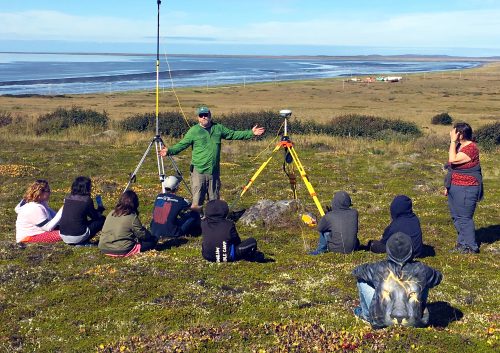Maio awarded NSF CAREER grant to study storm hazards
September 19, 2019
Tanya Clayton
907-474-7541
A National Science Foundation award to University of Alaska Fairbanks researcher Chris
Maio will support research and education in western Alaska coastal communities that
are affected by severe storms. Maio has been awarded $800,000 to fund studies of storm-driven
coastal hazards.
The five-year grant focuses on funding extensive field work at four sites in western
Alaska and will introduce new research instruments, fund an undergrad intern program,
and develop K-12 curriculum specially designed for Alaska Native communities in coastal
regions. The NSF CAREER awards include a federal grant for research and education
activities for five consecutive years. They are awarded to exemplary junior faculty
who excel in combining education and research within the framework of the mission
of their organizations.

Maio, who serves as associate professor of coastal geography at the UAF College of Natural Science and Mathematics, has already helped implement citizen-based erosion monitoring programs in more than 20 Alaska villages. The project will work to teach residents to scientifically measure the impacts of storms, and will also help communities meet the requirements needed to receive funding from the Environmental Protection Agency and other sources for mitigating the effects of disasters.
The NSF CAREER grant will help researchers understand modern, historic, and prehistoric storm impacts in western Alaska while supporting informed decision making and increased research capacity in the Arctic.
“We’re looking into modern storm impacts, and also how the decline in sea ice plays into that,” said Maio. “We’re doing sediment coring to gain long-term context, which helps us understand what is happening today as well as what could happen in the future.”
In addition to providing long-term context, the funding will also help build educational opportunities within Alaska Native communities. Through internships, K-12 curriculum development, and community workshops, the researchers hope to position stakeholders so they can develop strategies that will help protect both people and infrastructure.
“There’s so little information about how storms impact coastlines in Alaska, we’re trying to build records and information so other scientists can utilize that, and better understand how storms could change the coastlines in the future,” said Maio.


